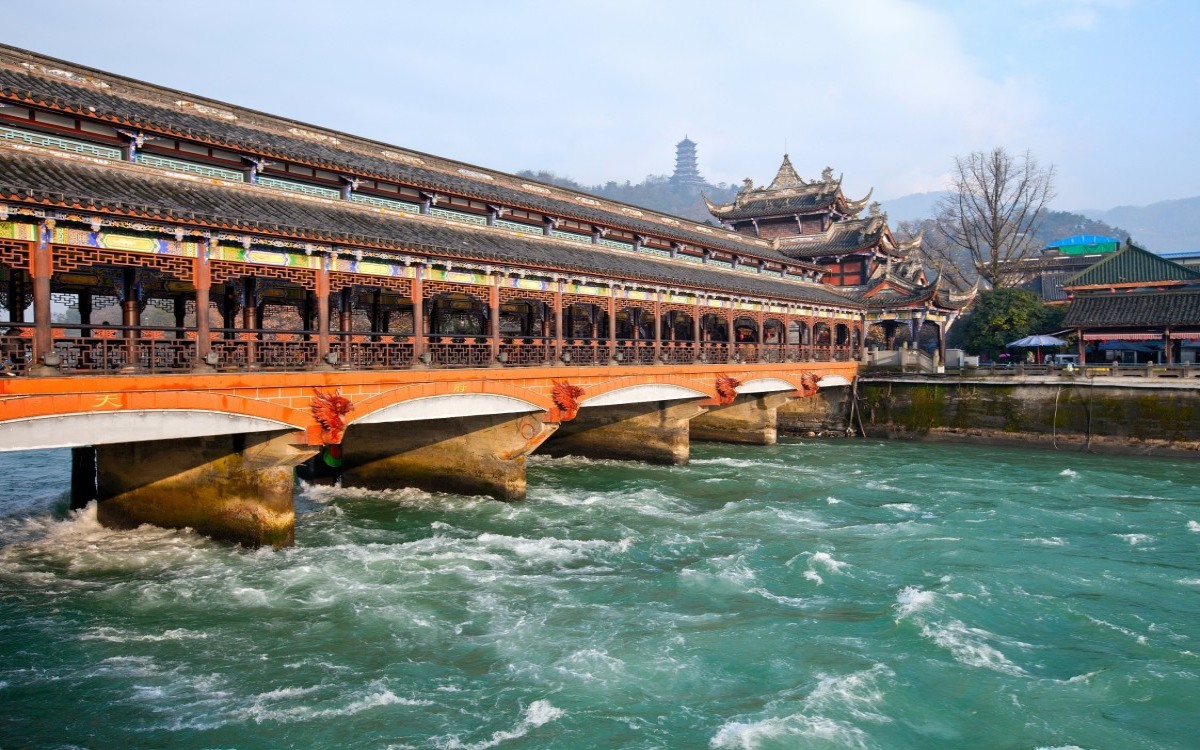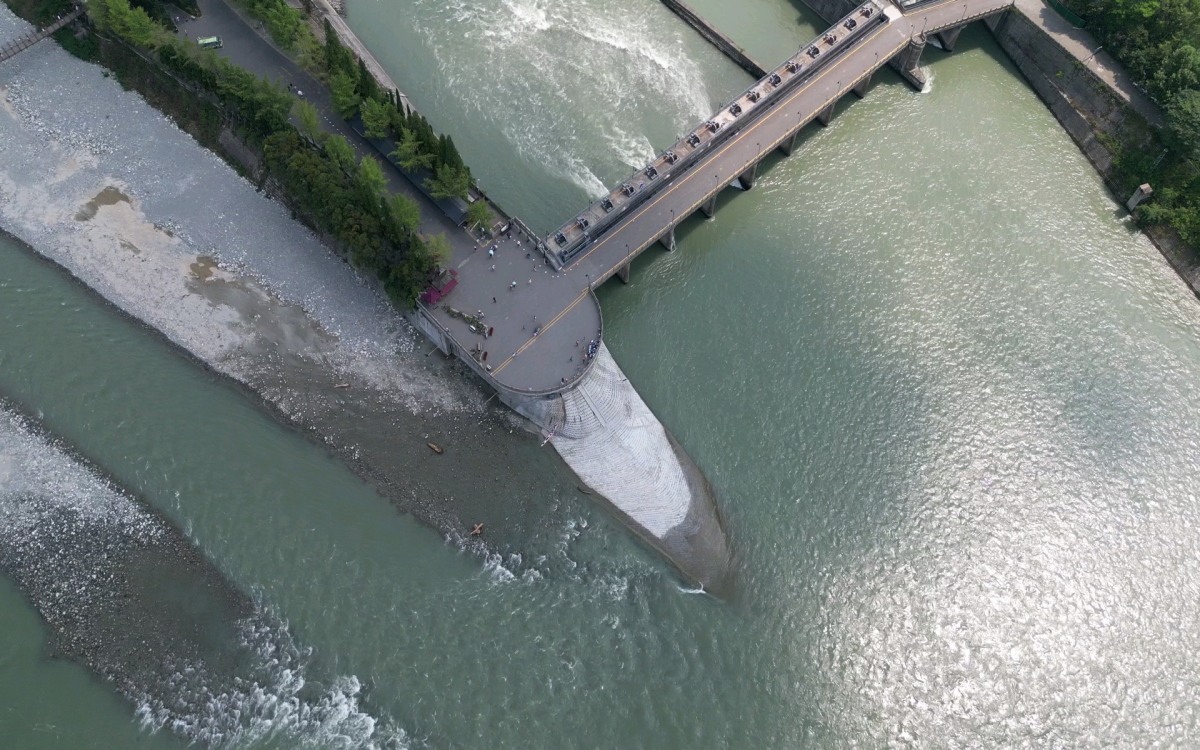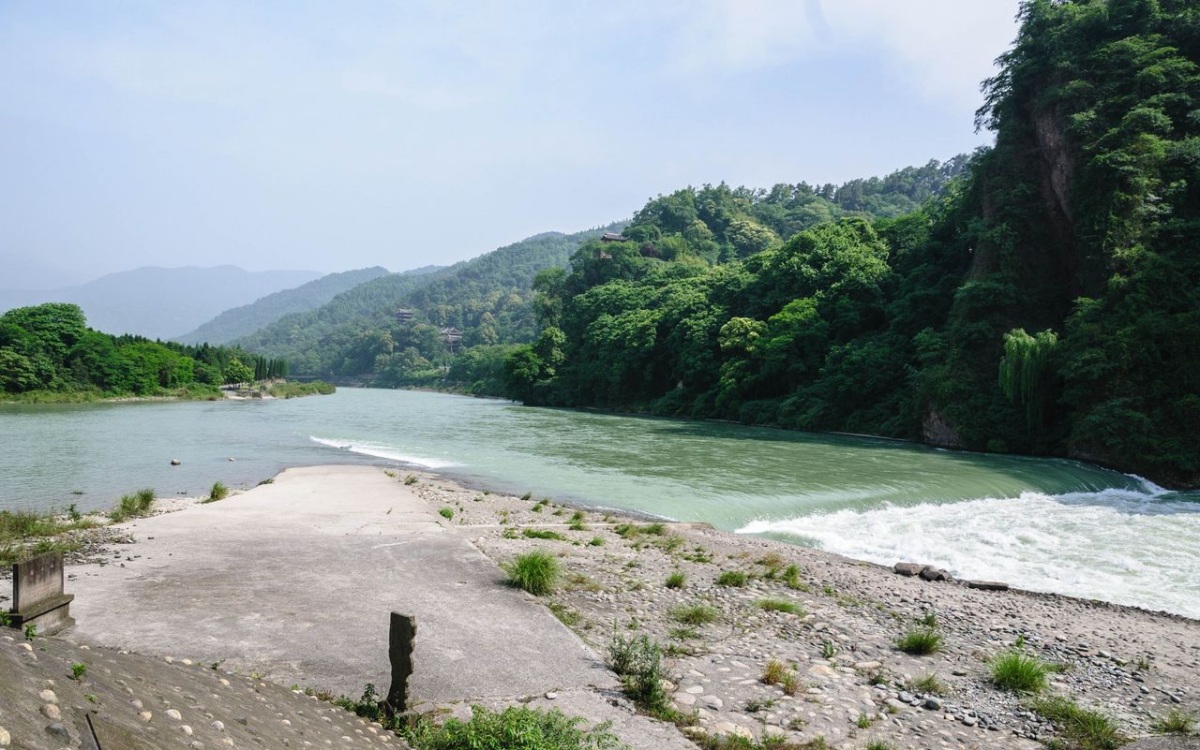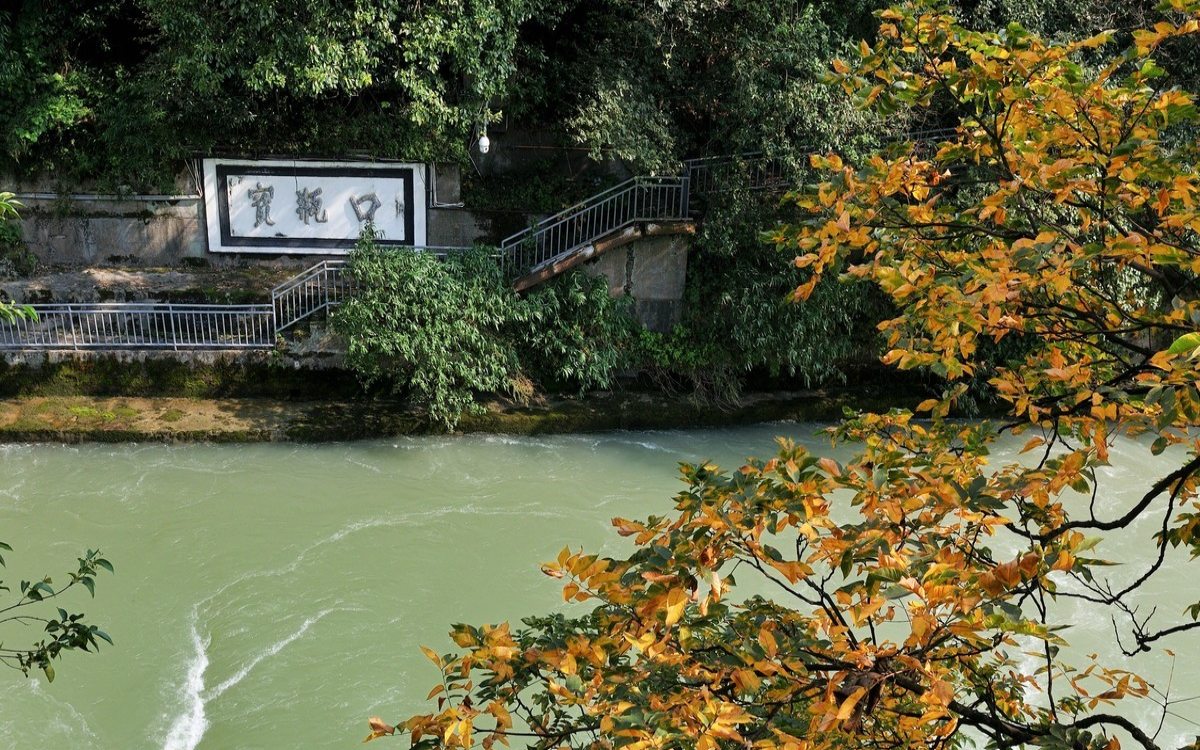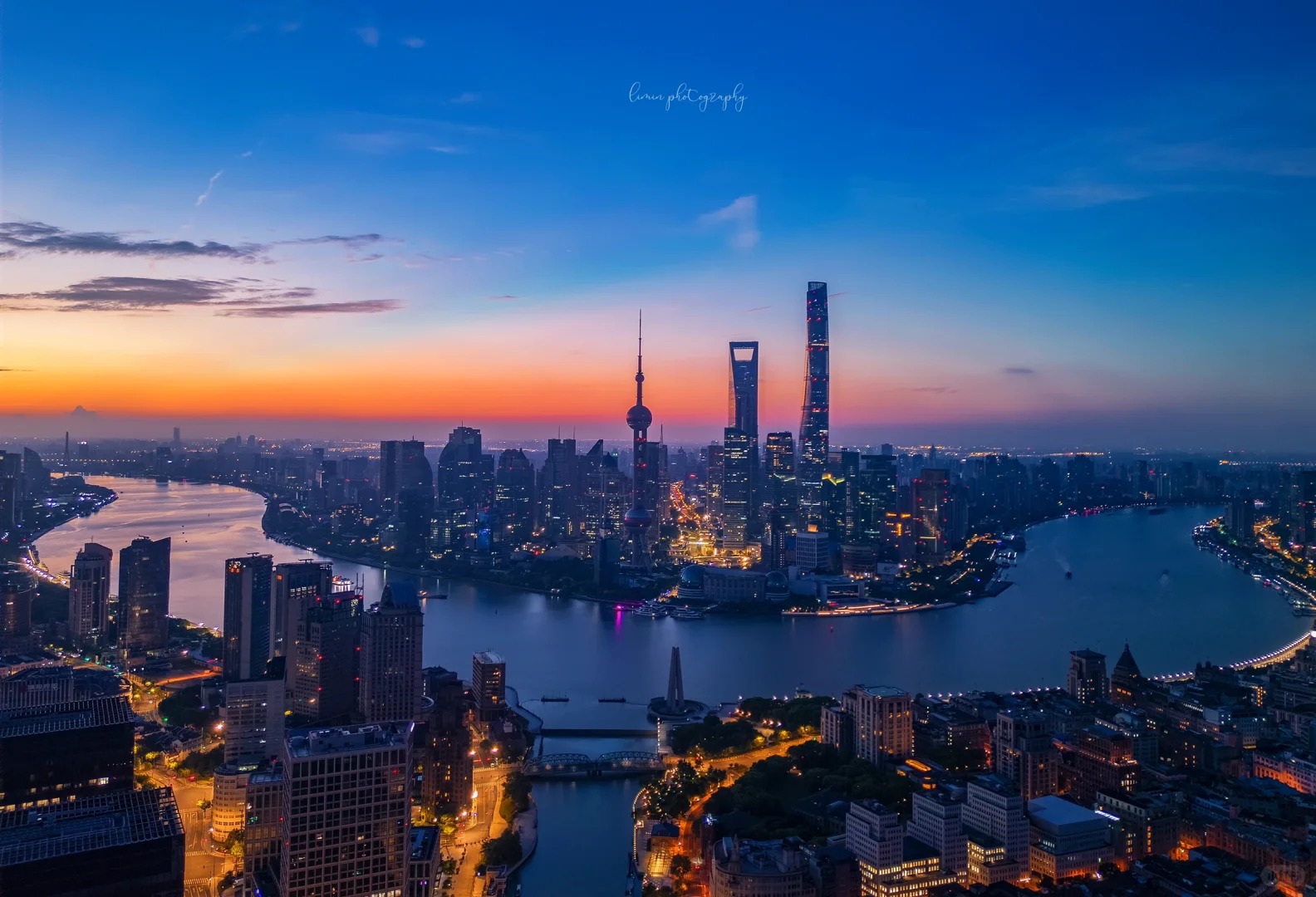Table of Contents
ToggleThe Dujiangyan Irrigation System stands as one of China’s most extraordinary feats of ancient engineering, a testament to human ingenuity that has seamlessly blended with nature for over two millennia. Located in Sichuan Province, near the city of Chengdu, this remarkable hydraulic project was constructed around 256 BCE and, incredibly, continues to fulfill its original purpose of irrigation, flood control, and water supply.This article will take you through the fascinating story of the Dujiangyan Irrigation System—uncovering its ancient history, how the irrigation system works, its far-reaching impact, and most importantly, this article will offer you some travel guides to help you plan your tour better.
What is Dujiangyan Irrigation System?
The Dujiangyan Irrigation System is an ancient Chinese hydraulic engineering project built around 256 BCE. It is the oldest and only surviving no-dam irrigation system in the world, designed to control floods, manage sediment, and irrigate the Chengdu Plain in Sichuan Province. It still functions today.
What is the History of Dujiangyan Irrigation System?
The Dujiangyan Irrigation System, built around 256 BCE during the Warring States Period, was commissioned by King Zhao of Qin to control floods and droughts in Sichuan’s Chengdu Plain. Governor Li Bing and his son designed a revolutionary “no-dam” system that diverted the Minjiang River’s flow naturally, enabling flood control, silt management, and reliable irrigation without disrupting navigation. This innovative approach ensured its lasting success.
How the Dujiangyan Irrigation System Works?
The genius of the Dujiangyan Irrigation System lies in its three core components, which work synergistically to manage the powerful Minjiang River:
- Yuzui (Fish Mouth Levee): This cone-shaped levee, resembling a fish’s mouth, is strategically placed in the middle of the river. It divides the Minjiang into an Inner River (Neijiang) and an Outer River (Waijiang). The Inner River carries a controlled amount of water towards the Chengdu Plain for irrigation, especially during the dry season, while the Outer River serves as the main course, discharging excess water, particularly during flood season.
- Feishayan (Flying Sand Weir): Located further down the Inner River, this low weir plays a crucial role in discharging excess water and sediment. During high flow, surplus water and silt automatically flow over the Feishayan into the Outer River, preventing the irrigation channels from silting up and mitigating flood risk.
- Baopingkou (Precious Bottle Mouth Channel): This narrow channel, carved through Mount Yulei, acts as a final control gate, regulating the volume of water entering the extensive network of irrigation canals that fan out across the Chengdu Plain. Its bottleneck shape precisely controls the inflow, ensuring a steady and manageable supply.
What is the far-reaching impact of Dujiangyan Irrigation System?
The immediate and long-term impact of the Dujiangyan Irrigation System was transformative. It effectively ended the cycle of floods and droughts on the Chengdu Plain, turning it into one of China’s most fertile agricultural regions. This agricultural bounty supported a large population, contributing to the economic strength and cultural development of Sichuan Province. Today, the system continues to irrigate approximately 668,700 hectares (over 1.65 million acres) of farmland and provides water to more than 50 cities and 37 counties in Sichuan, benefiting millions.
What is the travel guides of Dujiangyan Irrigation System?
How to get from downtown Chengdu to Dujiangyan?
- Metro+high-speed rail: Take Metro Line 2 to Xipu Station, then transfer to the high-speed rail from Xipu Station to Dujiangyan Station. The whole journey takes about 1.1 hours. This is the most cost-effective way to travel.
- Scenic area direct bus: take the scenic area direct bus from Chengdu Chunxi Road to Dujiangyan, which takes about 1.1 hours.
- Private car/taxi:some visitors choose this way for convenience.
What is the key attractions of Dujiangyan Irrigation System?
- Yuzui Levee Viewing Platform: Offers panoramic views of the Fish Mouth Levee dividing the Min River.
- Feishayan Weir: Observe the Flying Sand Weir and understand its role in sediment control.
- Baopingkou Channel: See the impressive Bottle-Neck Channel cut through the mountain.
- Anlan Suspension Bridge (Anlan Suoqiao): An ancient-style cable bridge spanning the Inner and Outer Rivers, offering stunning views. It was originally made of bamboo ropes but is now reinforced with steel.
- Erwang Temple (Two Kings Temple): Built to honor Li Bing and his son for their monumental contribution. It’s located on the hillside overlooking the system.
- Fulong Temple (Dragon-Taming Temple): Contains exhibits and statues related to Li Bing and the history of water control.
- Yulei Pavilion: Provides an excellent vantage point for an aerial perspective of the entire headworks of the Dujiangyan Irrigation System.
When is the best time to visit Dujiangyan?
The best times to visit the Dujiangyan Irrigation System are during spring (March to May) and autumn (September to November) when the weather is mild and pleasant, and the surrounding landscapes are lush. The annual Water-Releasing Festival (Qingming Festival, usually in early April) is a culturally significant event, reenacting ancient ceremonies and celebrating the system’s continuous nourishment of the land.

Chengdu Day Tour : Pandas & Jinli Street with Hot Pot
Frequently Asked Questions(FAQs) of Dujiangyan Irrigation System
Why the Dujiangyan Irrigation System Matters Today?
More than just an archaeological site or a tourist attraction, the Dujiangyan Irrigation System is a living monument to sustainable engineering and foresight.It remains central to Sichuan’s agriculture, water supply, and flood management, and its legacy continues to inspire awe and respect for the ingenuity of ancient civilizations.
How does the Dujiangyan Irrigation System work without a dam?
It works through three main components: the Yuzui (Fish Mouth Levee) which splits the Min River, the Feishayan (Flying Sand Weir) which discharges excess water and sediment, and the Baopingkou (Bottle-Neck Channel) which regulates water flow onto the Chengdu Plain. The system uses gravity and the river’s natural dynamics.
What is the best way to visit the Dujiangyan Irrigation System from Chengdu?
The most common ways are by high-speed train from Xipu Station in Chengdu to Dujiangyan Station (about 30-45 minutes).

